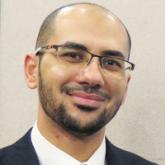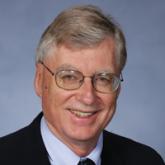Conference Coverage

Resective Epilepsy Surgery May Be Beneficial in Patients 70 and Older
HOUSTON—Elderly patients with refractory epilepsy may achieve a positive surgical outcome from resective epilepsy surgery, according to research...

WASHINGTON, DC—The diagnosis of epilepsy in elderly patients may be challenging due to the disease’s many mimics, a patient’s cognitive impairment, unwitnessed events, and the potential for false positives on imaging or EEG, according to a lecture delivered at the 71st Annual Meeting of the American Epilepsy Society.
“The onus is on us to rigorously explore the histories of these patients,” said Colin Josephson, MD, Assistant Professor of Neurology and Community Health Sciences at the University of Calgary in Alberta. “Ninety percent of our diagnosis is in the history.”
Preictal premonitory symptoms, ictal semiology, and postictal symptoms may be key to distinguishing between epilepsy and its mimics, which include cardiac arrhythmia, hypoglycemia, hyperglycemia, syncope, transient ischemic attack, stroke, transient global amnesia, delirium, sleep disorders, and psychogenic nonepileptic attacks. Abrupt loss of consciousness, for example, may suggest a diagnosis of cardiac arrhythmia. In cases involving impaired awareness, neurologists should have a high level of suspicion for hypoglycemia or hyperglycemia. “Delirium in and of itself can mimic nonconvulsive status epilepticus,” Dr. Josephson said.
Medications may cause glucose or electrolyte abnormalities that trigger seizures or similar events. One study found that about 40% of patients older than 65 were taking five to nine medications, and 18% were taking 10 or more medications. A 2011 study by Budnitz et al found that, based on a sample of 58 hospitals, adverse drug events may result in about 1.5% of emergency hospitalizations among older adults. In particular, endocrine, cardiovascular, neurologic, and anti-infectious agents can cause provoked acute seizures and seizure mimics, Dr. Josephson said.
The etiology of epilepsy in the elderly may influence the disease’s comorbidities, psychosocial impact, functional status, and treatment. The largest group of cases—about 30% to 50% of the total—has cerebrovascular etiology. Neurodegenerative conditions may be the etiology in 10% to 20% of cases, and other conditions (eg, tumor, trauma, or autoimmune epilepsy) may cause 5% to 15% of cases. The cause may be unknown in 30% to 50% of cases.
After ischemic stroke, the incidence of epilepsy ranges from about 2.5% to 15% up to one year, and from 7% to 10% up to five years. After hemorrhagic stroke, the incidence of epilepsy ranges from 10% to 20%. A recent systematic review found that the likelihood of developing a seizure or seizure disorder is about 1.4- to 1.5-fold greater after a hemorrhagic stroke, compared with after an ischemic stroke. A review by Ferlazzo et al identified three main risk factors for poststroke epilepsy: cerebral hemorrhage, early-onset seizures, and cortical involvement.
About 5% of patients with dementia develop epilepsy. “It can be hard to distinguish [epilepsy] in this population due to the fact that a lot of seizures would involve altered levels of awareness or confusion, which is a feature of dementias, as well,” Dr. Josephson said.
Research suggests that elderly-onset epilepsy may be a unique disease entity with etiologies, seizure characteristics, and comorbidities that differ from those of younger-onset epilepsy. Using a prospective cohort database, Dr. Josephson and colleagues examined differences in patients according to age of epilepsy onset and identified 14 clinical variables that predict whether a patient will have elderly-onset epilepsy or young-onset epilepsy. “We may be able to develop targeted therapy or precision medicine for this population,” he said.
The new operational definition of epilepsy allows neurologists to diagnose epilepsy based on one unprovoked seizure when the 10-year risk of having a second seizure is at least 60%. Many elderly patients have focal lesional epilepsy, which suggests that many patients’ 10-year risk of a second seizure is greater than 50%. “This is a paradigm shift that we continue to take into account when evaluating this patient population,” Dr. Josephson said. Further research is needed to determine “whether the vast majority of these patients, if they are 65 or older, actually have a diagnosis of epilepsy.”
Neurologists should be aware of potential pitfalls when investigating suspected epilepsy in the elderly. Incidental imaging findings are common and more likely with age. “Video-EEG telemetry may be just as useful for this population as it is for younger adults or children,” however, Dr. Josephson said.
A systematic review by Morris et al found that among patients ages 70 to 89 with no neurologic symptoms who were evaluated for screening purposes with MRI, between 15% and 25% had nonspecific white matter hyperintensities. Likewise, non-neoplastic incidental brain findings occurred in as much as 10% of patients. “Silent infarcts were relatively common in 2% to 3% of patients, as well,” Dr. Josephson said. “You do run the risk, if you start a scattershot approach for these patients, of running down the black hole of finding nonspecific findings and then trying to explain them or going to further investigations … when they may in fact be red herrings. In this population, we have to be careful about what we order, why we order it, and how we interpret it.”
Elderly patients may have high rates of nonspecific EEG findings, as well. Generalized slowing was reported in about 31% of elderly patients examined by Widdess-Walsh et al. Focal slowing, especially within the temporal lobes, was seen in about 10% of patients, and about 5% of these patients had epileptiform discharges.
McBride et al studied 94 patients ages 60 and older who were admitted to a seizure monitoring unit. About 26% of patients with nonepileptic events nevertheless had epileptiform discharges. Of the patients with epileptic events, 76% had interictal epileptiform discharges. “Overreliance on the EEG when making a diagnosis in this population is a major mistake,” and neurologists should not solely rely on the interictal EEG, Dr. Josephson said. “The sensitivity and the specificity are not high enough…. You want to capture events.”
In McBride’s eight-year study, about 42% of the patients had epilepsy. “But interestingly, about 14% had nonepileptic attacks.... This is not necessarily a rare consideration in these patients,” said Dr. Josephson.
About 30% of the patients did not have an event during their admissions to the unit, but for about 60%, neurologists were able to establish a diagnosis of epilepsy or epilepsy mimic. Video-EEG monitoring may be useful “in those patients in which there are diagnostic conundrums,” Dr. Josephson said. Establishing the correct diagnosis is important because even appropriate therapy entails additional risk in elderly patients.

HOUSTON—Elderly patients with refractory epilepsy may achieve a positive surgical outcome from resective epilepsy surgery, according to research...

WASHINGTON, DC—When initiating antiseizure therapy for elderly patients with epilepsy, drug interactions and side effects, especially impaired...
